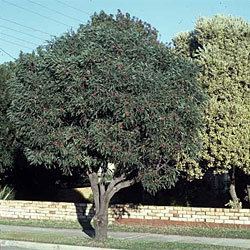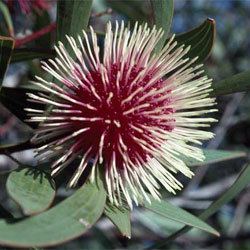Genus Hakea Rank Species | ||
 | ||
Similar Hakea, Hakea bucculenta, Hakea petiolaris, Hakea salicifolia, Spider flower | ||
Burke s backyard hakea laurina
Hakea laurina is a plant of Southwest Australia that is widely cultivated and admired. The species is often referred to as Kodjet, Pincushion Hakea, and Emu Bush. The specific epithet, derived from the Latin laurus, is given for the resemblance to the leaves of laurel. The Noongar name for the plant is Kodjet or Kojet.
Contents
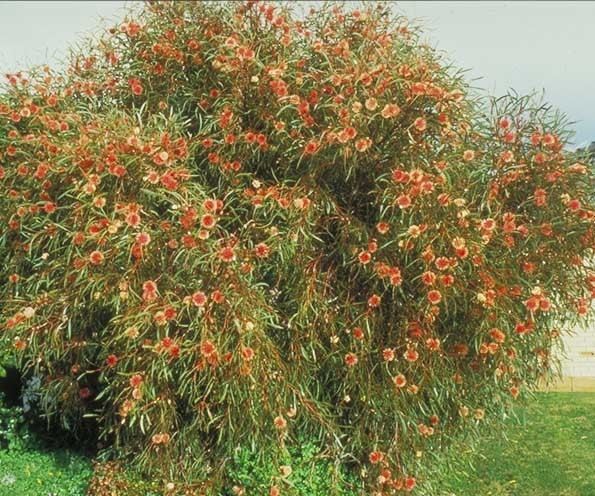
The habit of this plant is an upright shrub or tree, reaching a height between 2.5 and 6 metres and width of between 3 and 5m. It does not possess a lignotuber. The habitat is often sandplains, sometimes occurring on sandy-clay, most recorded specimens are in the southern districts of its botanical province.
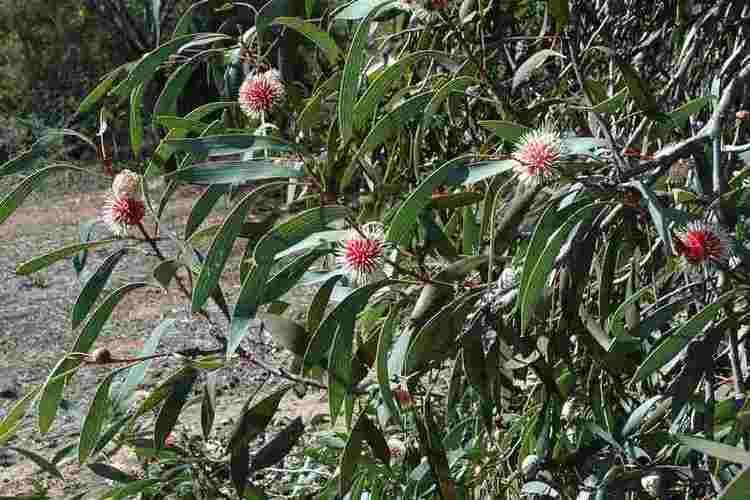
Flowers are initially pale or cream, perhaps hidden by the leaves in the early stages, and are contained by scale-like bracts before opening. These are deep pink to red on the globular centre, a clustered flowerhead at the leaf axils, pale styles emerge from these. This resembles a pin cushion. Nectar and a slight fragrance is produced from the flowerheads. The flowering period occurs between April and August. Leaves are simple and slightly blue green, they are flat, glabrous, have entire margins, and are obovate or lanceolate in outline, coming to a sharp point at the tip. The leaves vary in size on the plant, they may be 6–29 mm wide and reach 180 mm in length. Foliage is dense and in alternate arrangement on the upright branchlets; in some forms this may be pendulous and reach the ground. Bark is grey and smooth. Fruit is retained on the plant, is ovoid, slightly beaked at the end, and a smooth surface on the valve. The species occurs in the sandplains of the coastal Southwest of Australia, the northernmost range being Narrogin and extending east to Esperance.
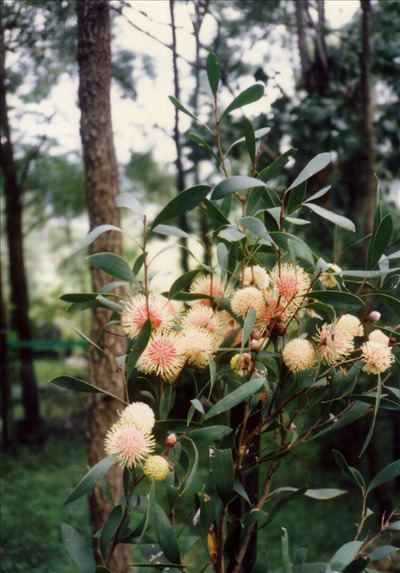
The plant, which is propagated from seeds, is used in cultivation in the Eastern states of Australia, and as a hedging or street plant in America and Italy. Adaptable to a number of soil types, the plant is also tolerant of frost. The uses of this species include ornament and shading in public streets, wildlife habitat, windbreaks, and control of soil erosion.
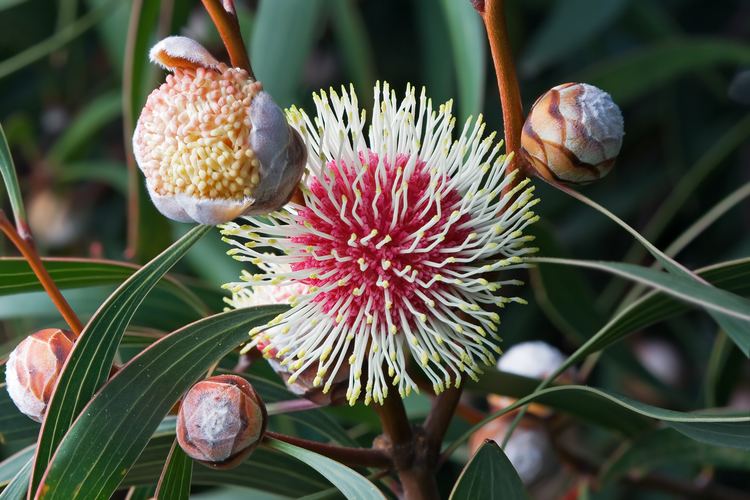
In the language of flowers, Hakea laurina symbolises nobility and longevity.
Hakea laurina and friends
